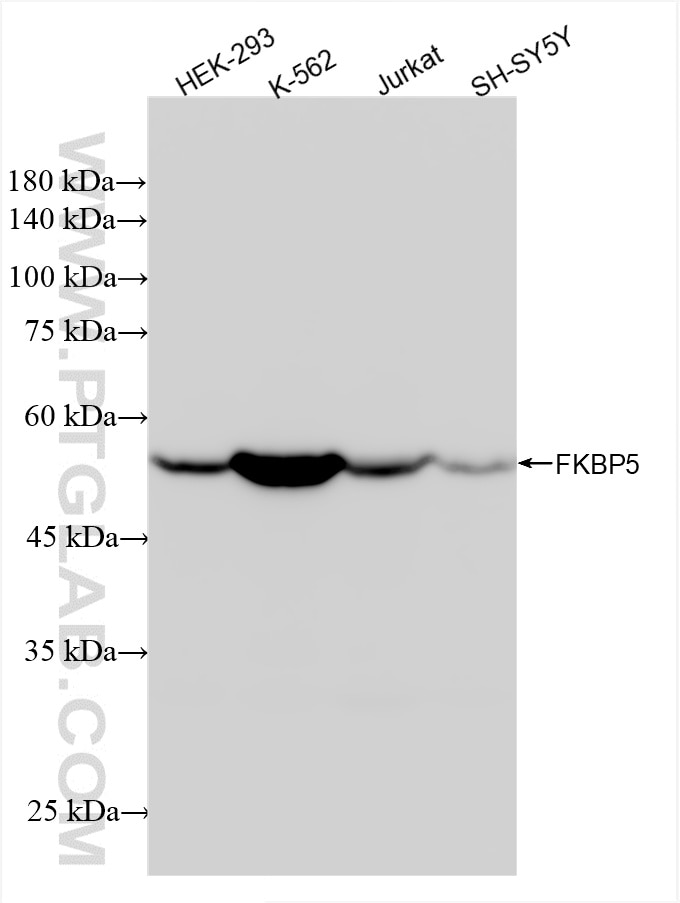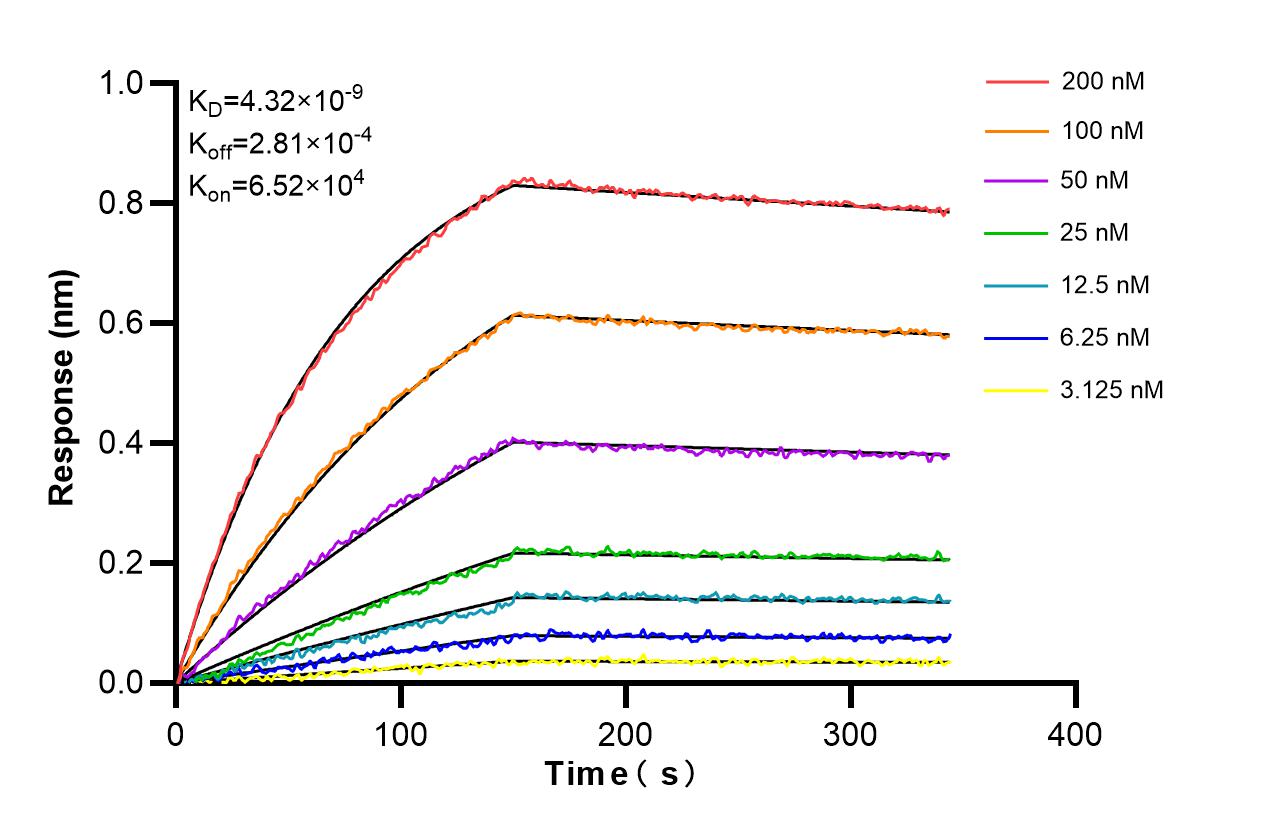Validation Data Gallery
Tested Applications
| Positive WB detected in | HEK-293 cells, K-562 cells, Jurkat cells, SH-SY5Y cells |
Recommended dilution
| Application | Dilution |
|---|---|
| Western Blot (WB) | WB : 1:2000-1:10000 |
| It is recommended that this reagent should be titrated in each testing system to obtain optimal results. | |
| Sample-dependent, Check data in validation data gallery. | |
Product Information
86189-1-RR targets FKBP5 in WB, ELISA applications and shows reactivity with human samples.
| Tested Reactivity | human |
| Host / Isotype | Rabbit / IgG |
| Class | Recombinant |
| Type | Antibody |
| Immunogen | FKBP5 fusion protein Ag5337 相同性解析による交差性が予測される生物種 |
| Full Name | FK506 binding protein 5 |
| Calculated molecular weight | 457 aa, 51 kDa |
| Observed molecular weight | 51 kDa |
| GenBank accession number | BC042605 |
| Gene Symbol | FKBP5 |
| Gene ID (NCBI) | 2289 |
| Conjugate | Unconjugated |
| Form | |
| Form | Liquid |
| Purification Method | Protein A purification |
| UNIPROT ID | Q13451 |
| Storage Buffer | PBS with 0.02% sodium azide and 50% glycerol{{ptg:BufferTemp}}7.3 |
| Storage Conditions | Store at -20°C. Stable for one year after shipment. Aliquoting is unnecessary for -20oC storage. |
Background Information
FKBP5, also known as FKBP51, belongs to the family of immunophilins, FK506 binding proteins (FKBPs). FKBP5 is a negative regulator of GR activity and plays a key role in the termination of the stress response by GRs. FKBP5 limits GR function by decreasing ligand-binding sensitivity, thereby delaying nuclear translocation and reducing GR-dependent transcriptional activity. The known functions of FKBP5 include the regulation of steroid hormone receptors, inhibiting apoptosis in cancer cells, promoting Akt1 dephosphorylation, and inhibiting the Akt1 pathways, to name a few. FKBP5 is widely expressed and the calculated molecular weight is 51 kDa (PMID: 21119664, PMID: 34077736, PMID: 37154033).
Protocols
| Product Specific Protocols | |
|---|---|
| WB protocol for FKBP5 antibody 86189-1-RR | Download protocol |
| Standard Protocols | |
|---|---|
| Click here to view our Standard Protocols |

